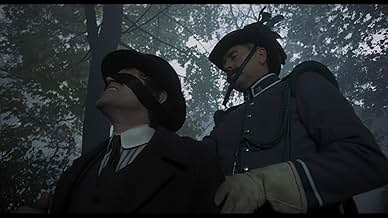The Hourglass Sanatorium is the first bizarre adventure movie I've actually enjoyed. It's an adaptation of Sanatorium Under the Sign of the Hourglass, but not solely, it also includes sequences from other works by Bruno Schulz. its unique, isolated world, its atmospherics, colours and shapes. The time period of the film is a mixture of elements from the turn-of-the-century Galicia where Schulz grew up, and Has' own pre-World War II memories of the same region.
The production design is outstanding. The cinematography - the costumes, buildings, props and other requisites is absolutely amazing. And so is the camera work. It floats elegantly through the awe-inspiring world created by the design team, frequently incorporating very long tracking shots through the grand sets and locations. The envoirmental attributes is as eye-catchingly surreal too, from the sudden appearance of elephants to some disturbing mechanical mannequins.
And the story is, a subsequent dream-like journey through absurd surrealism, with infinitely random externalized stream of collective consciousness. It's a timeless voyage through the subconsciousness, a puzzle with small bits and pieces scattered throughout its tale, and takes on every thing imaginable. Its a movie experience like you've never seen before, just sit back and enjoy the absurd masterpiece playing front of your very eyes.
But of course, given that the claws of the repulsively fundamentalist and contradictory Communist regime, the authorities forbid Has to submit The Hourglass Sanatorium for the 1973 Cannes Film Festival, but the director managed to smuggle a print abroad so the film could be screened at the festival. The Cannes jury, led by actress Ingrid Bergman, honoured the film with the Jury Prize.



































